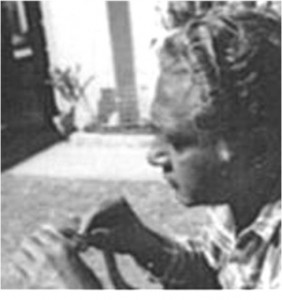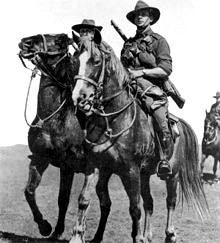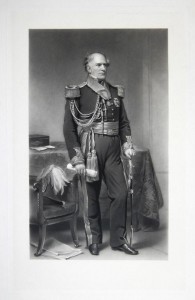Registered with the Registrar of Newspapers for India under R.N.I 53640/91
Vol. XXVI No. 20, February 1-15, 2017
Australia Day was on January 26th. A look at some…
by Dr. A. Raman
Madras-Australia links
As colonies of Britain, Australia and India have shared many links in the past. For example, convicts from India were deported to New South Wales and Tasmania. But there were many of the links I talk of just a few of them here.
People from the Madras region had moved to Australia, long before formal migration started, at least from the 18th Century.
An early migration of a more formal nature took place in 1838 when the Government of New South Wales agreed to take seven boys, not less than 12 years of age, and of ‘pure European descent’, from the Madras Military Male Asylum.
 Ted Ramsamy.
Ted Ramsamy.
These boys arrived on the Sesostris in February 1841, their passage arranged and paid for by the East India Company’s Marine Board. The seven boys were Samuel Hobart, James Marlow, John Harris, Christopher Connor, William Bird, James Barry and James MacKin. The girls came a litte later.
-
Sydney Orphan School Records name the following:
- Mary Ann Cardwell (age 16), from Madras Military Girls Asylum arrived in Sydney on 7 January 1843 and left Sydney Orphan School on 18 July 1843, marrying one Philip Gunning
- Caroline Davey (age 14), also from the Madras Military Girls Asylum, arrived in Sydney on 7 January 1843 and left Sydney Orphan School on 7 August 1843, marrying one Thomas Collins in 1846
- Caroline Smith (age 14) also from the Madras Military Girls Asylum, arrived in Sydney on 1 July 1843 and left Sydney Orphan School marrying one Evan Richards in 1851
- Ellen Tooner (age 14), also from the Madras Military Girls Asylum, arrived in Sydney on 7 July 1843, apprenticed Rev. D. MacKenzie of Albury, and married Walter J Pearce in 1854
- Mary Watts (age 15), also from the Madras Military Girls Asylum, arrived in Sydney on 7 July 1843, married three times in 1850, 1851, 1852
- One Mrs Wooller, employed in Madras as the Matron to accompany girls to Sydney, arrived in Sydney. She was paid £17/10/- before departure with another £17/10/- to be paid once she had discharged her duty to the girls on arrival in Sydney.

* * *
A remarkable story of Indian migrants belonging to the early 19th Century were the ancestors of Ram Chandra (also known as Edward [Ted] Royce Ramsamy, b.1921), who settled in Grafton (north of Sydney). The Internet files on Ted Ramsamy indicate that his grandparents came to Australia from Bombay. Considering his last name ‘Ramsamy’, it is highly likely that Ted’s ancestors came to Sydney from the Madras region and not from the Bombay region. Honoured by the Government of Australia for his generosity and philanthropy, Ted (d. 1998, Brisbane) is remembered even today for his remarkable skill in handling the tai pans, the deadly brown snakes of Australia.
* * *
British, Dutch, Indian, Portuguese coins and currencies were commonly circulated during the early years of formation of the colony of New South Wales. Governor Philip Gidley King issued a proclamation fixing specific values to those widely used coins in circulation in New South Wales in 1800. This helped to ensure a ready supply of coinage for local trading and stabilised the value of each coin used. King fixed the Spanish dollar at 5 shillings value, yet confusion prevailed because of goods arriving from the Americas, Asia, and the Cape of Good Hope.
 Walers on duty.
Walers on duty.
Lachlan Macquarie, Governor of New South Wales, keen on ensuring a reliable supply of coins for the colony, arranged for the minting of 40,000 coins in Madras for use in New South Wales. Then arrived in Sydney aboard the Samarang on November 26, 1812. These coins were Spanish silver eight reale coins, known as ‘pieces of eight’.
It is likely that Governor Macquarie was aware of an earlier system used in the West Indies, where captured Spanish dollars were cut and counter-stamped, so they could not be re-exported. By having the centres cut out of the Madras-minted coins for use in NSW, better known as the ‘holey dollars’. Macquarie made them identifiable as belonging from New South Wales. In doing so, he created the first formal coins of Australia, which were later minted locally.
* * *
One Captain J.G. Collins of the 13th Light Dragoons, Madras Artillery, sought permission from Henry Chamier [Chamier’s Road fame?], Chief Secretary of Madras Government on June 1, 1833 to procure horses for the Madras Army from New South Wales. Collins sailed from Madras to Australia (then van Diemen’s Land) via Mauritius in September 1833. Collins’s knowledge on the suitability of horses from the Colony of New South Wales was from Robert Dawson (former commissioner of the Australian Agricultural Company) in London and Charles Frazer, the colonial botanist.
 William Denison.
William Denison.
Collins was authorised by the Government of Madras to import 200 horses every year for the following four years, but received no financial guarantee for it. Either he had to take the risk of selling them or the NSW horse breeders had to ship the animals to Madras on consignment. The risks were that the animals had to survive the exhausting sea voyage and that the Madras Remount Committee would accept the emaciated animals on arrival in Madras. The arrangement was that for every accepted horse Collins would be paid Rs. 590, whereas every rejected animal was his problem. Physical specifications were stringent: “The horse to be entire, and at least half-bred, sound in wind and limb, compact, active and capable of carrying 17 stone, not under 3, nor above 7 years old, nor under 14 hands high. Horses above 15 hands are neither desired …”.
Collins travelled around NSW accompanied by a local veterinarian Lindesay and arranged to ship to Madras 32 horses on the City of Edinburgh on July 2, 1834, 30 on the Henry Tanner on January 2, 1835, and 32 on the Duchess of Northumberland on June 12, 1835. Collins’s shipments included a few geldings. But as the story goes the Madras horsemen preferred riding colts to geldings, because it challenged their masculinity! Sydney merchants calculated getting Rs. 590 (= £49) per horse. Although not profitable, the way NSW horses (Walers) were received in Madras encouraged Sydney breeders to think of continuing the trade.
By early 1836, the superiority of NSW horses compared with the local breeds and Capers (from the Cape of Good Hope) was established in Madras. Collins returned to London, but in 1836 he sought permission from the Colonial Secretary in Sydney for him to lease a large tract of land on the Kangaroo Valley (Southern Highlands of NSW) to set up a colt trade with Madras.
By 1837, however, interest in Madras in the Walers diminished and Collins also changed his business interest to setting up flour and timber mills in NSW!
* * *
William Denison was appointed the Governor of Madras, succeeding William Morehead in 1861 (till 1906), after his service as the Lieutenant Governor of Tasmania in 1847 and Governor of New South Wales in 1855. Denison settled at Guindy Park, but he frequently moved to Ootacamund. While in Ootacamund, he took an active part in the development of cinchona plantations for the extraction of quinine for malaria management.

